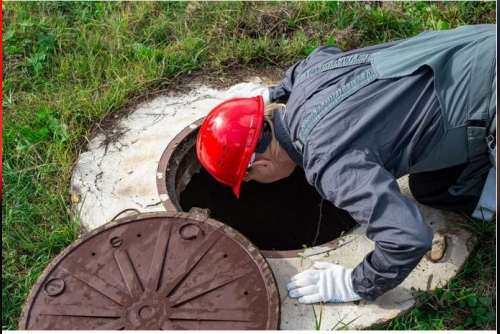Detecting leaks in sewer lines is a critical aspect of maintaining a well-functioning and efficient wastewater system. In this guide, we will explore common signs of sewer line leaks and various detection methods to identify issues promptly. Additionally, we'll emphasize the importance of incorporating sewer drain cleaning as part of a comprehensive maintenance strategy.
Common Signs of Sewer Line Leaks:
Foul Odors: Sign: Unpleasant and persistent odors in and around the property, often resembling the smell of sewage. Detection Method: Conduct a visual inspection of the property for any noticeable odors and investigate areas with a sewage smell. Slow Draining Fixtures: Sign: Sluggish drainage in sinks, toilets, or showers, indicating potential blockages or leaks. Detection Method: Monitor the speed of water drainage in various fixtures and assess any noticeable slowdowns. Pooling Water: Sign: Accumulation of water in unexpected areas, such as the yard or basement, suggesting a possible sewer line leak. Detection Method: Regularly inspect the property for standing water or wet patches in areas where water should not collect. Unexplained Increases in Water Bills: Sign: Significant and unexplained spikes in water bills may indicate a leak in the sewer line. Detection Method: Monitor water bills for unexpected increases, as this may signal a hidden leak requiring investigation. Mold or Mildew Growth: Sign: The presence of mold or mildew indoors, especially in areas close to sewer lines, may indicate water leakage. Detection Method: Regularly check for signs of mold or mildew growth, particularly in basements or areas with access to sewer lines.Detection Methods for Sewer Line Leaks:
Camera Inspections: Method: Utilize specialized cameras to inspect the interior of sewer lines, identifying cracks, breaks, or leaks. Importance for Sewer Drain Cleaning: Camera inspections assist in pinpointing the location and extent of leaks, guiding effective drain cleaning procedures. Pressure Testing:Method: Conduct pressure tests to assess the integrity of the sewer line, identifying potential leaks by monitoring pressure fluctuations. Importance for Sewer Drain Cleaning: Pressure testing helps identify leaks that may require subsequent drain cleaning to address blockages or debris causing the issue. Smoke Testing: Method: Introduce non-toxic smoke into the sewer system and observe for smoke emerging from potential leaks. Importance for Sewer Drain Cleaning: Smoke testing helps identify leaks and blockages, guiding the need for targeted drain cleaning interventions. Dye Testing: Method: Introduce colored dye into the sewer system and monitor for the appearance of dye in unexpected areas, indicating leaks. Importance for Sewer Drain Cleaning: Dye testing provides visual confirmation of leaks, aiding in the planning of drain cleaning procedures. Listening Devices: Method: Use sensitive listening devices to detect sounds associated with leaks, such as hissing or rushing water. Importance for Sewer Drain Cleaning: Identifying the source of leaks through listening devices informs targeted drain cleaning efforts to address any underlying issues. Ground Penetrating Radar (GPR): Method: Employ GPR technology to create subsurface images, revealing anomalies that may indicate sewer line leaks. Importance for Sewer Drain Cleaning: GPR assists in identifying the location and extent of leaks, guiding subsequent drain cleaning measures. Routine Inspections: Method: Implement regular inspections of sewer lines, combining visual assessments with the use of detection tools to identify potential issues. Importance for Sewer Drain Cleaning: Routine inspections allow for early detection of leaks, facilitating timely and proactive drain cleaning interventions.
The Role of Sewer Drain Cleaning in Leak Prevention:
Preventing Blockages: Regular drain cleaning helps prevent blockages that can contribute to increased pressure and stress on sewer lines, reducing the risk of leaks. Removing Debris: Drain cleaning procedures remove debris and buildup that may compromise the integrity of sewer lines, preventing potential leaks. Maintaining Flow: Efficient drain cleaning ensures proper water flow, minimizing the risk of sewer line leaks caused by obstruction or pressure imbalances. Addressing Root Intrusions: Drain cleaning is crucial for addressing root intrusions that may penetrate sewer lines, causing leaks and structural damage. In conclusion, detecting leaks in sewer lines requires vigilance in recognizing signs and employing various detection methods. Integrating regular sewer drain cleaning as part of a comprehensive maintenance strategy enhances the overall health and longevity of the sewer system, contributing to leak prevention and efficient wastewater management.











 Boost your website conversion rate with UX Design
Boost your website conversion rate with UX Design



